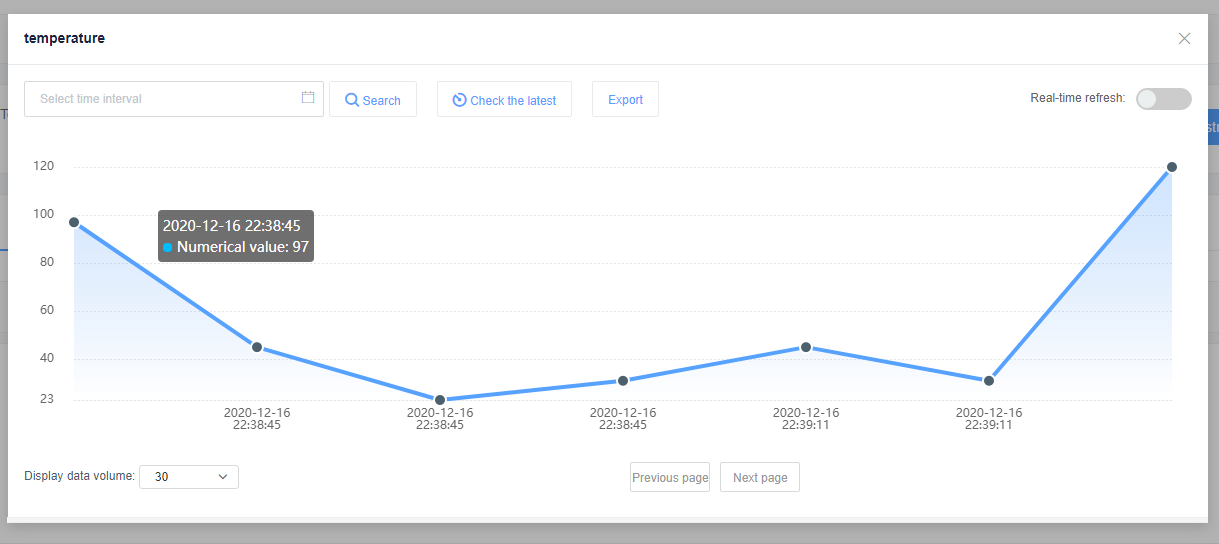
Data streams and data points
The platform organizes uplink data by data streams and data points, as shown below:

Data Storage
When a device uploads and stores data, it must upload data in the format of key-value, where key refers to the name of data stream and value refers to the actually stored data point and can come in many user-defined formats such as int, float, string and json.
In practice, data streams can be used to classify and describe certain attribute data of a device, such as temperature, humidity, coordinates and other information. Users can customize the range of data streams and classify highly correlated data as a data stream.
Streaming data are stored in chronological order by default, and users can query the values of data points from the data stream at different times, as shown below:

Users can query historical device data points using APIs. Please see API for details.
Data Flow Direction
Streaming data can flow to subsequent services while being stored. Users can configure the flow direction of a data stream using a rule engine. Please refer to the Rule Engine for more details.